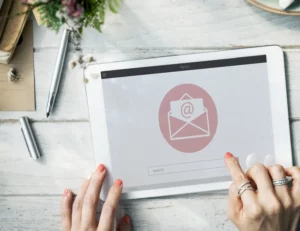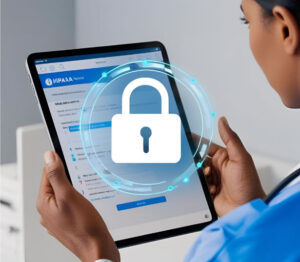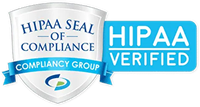In today’s interconnected world, email has become the backbone of communication—used for everything from personal conversations to business transactions. However, unlike face-to-face conversations, emails travel across the internet, where they can be intercepted or accessed by unauthorized parties. This makes securing online communications not just a wise choice, but an essential one. Email encryption transforms plain messages into unreadable data, ensuring that only the intended recipient can decipher the content.
PGP email encryption—short for Pretty Good Privacy—is one of the most popular and effective methods to secure emails. It offers a powerful way to protect sensitive information from hackers, government surveillance, or even unintended recipients. Particularly appealing to beginners, PGP provides a relatively straightforward way to increase your digital privacy without requiring extensive technical expertise. It acts as a digital lock and key system, allowing users to send and receive confidential emails with confidence.
While the technical details behind encryption can seem intimidating, mastering PGP is accessible and highly beneficial. This guide aims to demystify PGP email encryption, helping you understand the basics and guiding you through simple implementation steps. Learning about PGP equips you with a valuable tool to safeguard your personal and professional communications in an increasingly insecure online environment.
Understanding PGP Email Encryption
PGP encryption email is a method of securing email content through a process that ensures only authorized parties can read the message. At its core, PGP utilizes a technique known as asymmetric encryption, which employs a pair of cryptographic keys: a public key and a private key. When you send an encrypted email, you use the recipient’s public key to encode the message. The recipient then uses their private key to decrypt it. This process ensures that even if the email is intercepted, only the intended recipient’s private key can unlock and interpret the information.
Pretty Good Privacy (PGP) was developed in 1991 by Phil Zimmermann as an open-source encryption tool. Its goal was to provide accessible, strong encryption for ordinary users to protect their communications without relying on governments or corporations. Over the years, PGP evolved into a standard adopted worldwide for secure messaging, digital signatures, and data privacy. Its open nature has prompted widespread adoption and adaptation, inspiring various implementations and software solutions. Today, PGP remains a foundational technology in the realm of digital encryption, symbolizing the importance of user-controlled privacy.
The development of PGP marked a significant milestone in the history of cryptography. It brought strong encryption out of the realm of government and military use and into the hands of everyday users. Its robust encryption algorithms and user-friendly design have helped shape the online privacy landscape. Although newer encryption methods have emerged, PGP’s influence continues, and it remains a trusted option for securing emails, especially for those who prioritize control and transparency in their privacy tools.
The Importance of PGP-Encrypted Email
In a digital landscape marked by data breaches, government surveillance, and cybercriminal activity, individuals and businesses require reliable methods to safeguard sensitive information. Implementing PGP-encrypted email provides a significant layer of security, making it much more difficult for unauthorized parties to access confidential messages. This is particularly crucial when transmitting financial data, personal identifiers, or proprietary business information, as exposure of such data can have dire consequences.
Using PGP encryption facilitates safer communication in various scenarios. For example, journalists reporting on sensitive topics can exchange information securely with sources to prevent identification or retaliation. Small business owners can safeguard client data, and employees can communicate confidential strategies without fear of leaks. In the legal domain, PGP helps protect sensitive case details from falling into the wrong hands, ensuring client confidentiality and legal integrity.
Furthermore, PGP encryption acts as a powerful safeguard against data breaches and cyberattacks. By encrypting email contents, you reduce the risk of hackers intercepting private conversations or stealing sensitive credentials. It also helps organizations comply with privacy regulations, such as GDPR or HIPAA, which require the protection of personal information. In an era where digital privacy is increasingly under threat, adopting PGP-encrypted email becomes a responsible, strategic decision to uphold integrity, trust, and security in digital communications.
How PGP Email Encryption Works
At its core, PGP email encryption relies on a pair of keys—one public and one private—that work together to keep your messages secure. When you want to send an encrypted email, you use the recipient’s public key to lock the message. Once encrypted, only the recipient’s private key can unlock and read the message. Conversely, when you receive an encrypted email, you use your private key to decrypt it, provided it was encrypted with your public key. This process ensures that only authorized parties can access the message content.
To put it simply, the public key is like a digital lock you share with others. Anyone can use it to lock a message meant for you. However, only your private key—which you keep secret—can unlock that message. Generating these keys involves creating a mathematically linked pair. The communication is secured because, even if someone intercepts your email, without your private key, they cannot decrypt or read it, safeguarding your privacy.
The entire process relies on strong mathematical algorithms that make it computationally infeasible for outsiders to reverse-engineer the keys. When someone encrypts a message using your public key, it’s like placing a letter inside a locked box that only your private key can open. Conversely, suppose you want to sign a message. In that case, you use your private key to create a digital signature that recipients can verify using your public key, thereby confirming your identity and the integrity of the message. This combination of encryption and signatures makes PGP a comprehensive tool for secure communication.
Setting Up PGP Encryption for Your Emails
Getting started with PGP email encryption involves a few practical steps, but don’t worry—it’s accessible even for beginners. Here’s a straightforward guide to help you set up your first PGP encryption system:
Choosing a PGP Software or Service:
First, select a user-friendly tool suited for your needs. Popular options include GnuPG (a free, open-source program), Mailvelope (a browser extension for webmail), or ProtonMail (a secure email service with built-in PGP encryption). These tools vary in complexity and platform compatibility, so choose one that matches your comfort level and the devices you use.
Generating a PGP Key Pair:
Once your software is installed, you’ll need to generate your cryptographic keys. This process usually involves setting a strong passphrase and selecting a key length (a longer key offers better security). Your software will then produce a public and private key pair, which you should store securely. The public key can be shared with others, while your private key must remain confidential.
Exchanging Public Keys with Correspondents:
To communicate securely, you need your contacts’ public keys. Share your public key with them by exporting it and sending it via email or uploading it to a key server. Likewise, import their public keys into your system. Remember, verifying the authenticity of public keys (discussed below) is a crucial security step.
Encrypting and Decrypting Emails:
When composing an email, please select the option to encrypt it using the recipient’s public key before sending. The message becomes unreadable to anyone without the corresponding private key. Upon receipt, use your private key to decrypt the message, making it readable only to you. Many email clients integrate these steps seamlessly once properly configured, streamlining the entire process for beginners.
Best Practices for Using PGP Encrypted Email
To maintain the security and effectiveness of PGP-encrypted email, it’s essential to follow some core best practices:
Securely Managing and Storing Private Keys:
Your private key is the cornerstone of your email security. Never share it or store it in insecure locations. Use strong, unique passphrases to protect it, and consider storing backups in a secure, offline location. Regularly review and update your key security measures to prevent unauthorized access.
Regularly Updating PGP Software to Combat Vulnerabilities:
Encryption tools evolve as new vulnerabilities are discovered. Make it a habit to keep your PGP software (such as GnuPG or Mailvelope) updated to the latest version. Software updates often contain critical security patches that protect against potential exploits and improve functionality.
Verifying the Authenticity of Public Keys Before Use:
Before encrypting a message, always verify that the public key you are using genuinely belongs to the intended recipient. This can be achieved through key fingerprint verification, fingerprint exchanges, or the use of a trusted key server with multi-factor authentication. This step prevents impersonation attacks, where malicious actors might distribute fake keys to intercept your messages.
Following these best practices ensures your email communications remain private, secure, and resilient against common threats. It also helps establish a trustworthy foundation for ongoing encrypted exchanges with your contacts.
Common Challenges and Solutions in PGP Email Encryption
For beginners, working with PGP email encryption can present certain hurdles; however, understanding these issues and knowing how to address them can make the process smoother. One of the most common challenges is key management—keeping track of multiple keys, ensuring they are stored securely, and avoiding confusion about which key corresponds to which contact. Careful organization, such as maintaining an encrypted key directory and regularly backing up your private key in a secure location, can help mitigate this problem.
Another frequent obstacle is troubleshooting encryption errors, which often occur due to mismatched keys, incorrect key import/export procedures, or faulty software configurations. If you encounter errors, double-check that the correct public key is being used and that it has been adequately verified. Updating your encryption software regularly and following specific guides for your chosen tool can resolve many technical issues. Remember, community forums and support resources are valuable when troubleshooting more complex problems.
Finally, user mistakes, such as accidentally sending unencrypted messages or sharing private keys, can compromise your security. To prevent this, always verify the public key before encrypting your email and keep your private key confidential. Developing good habits—such as regularly reviewing your encryption settings before sending sensitive data—will reinforce your security practices. With patience and careful management, these everyday challenges can become routine parts of your secure email workflow.
The Future of PGP Email Encryption
Looking ahead, PGP email encryption is poised to evolve in tandem with advancements in digital security and encryption technology. As cyber threats become more sophisticated, so too must the tools we rely on for privacy. Emerging developments include stronger encryption algorithms, better user interfaces, and integration with mainstream communication platforms, making encryption more accessible and reliable for everyone.
However, the future of PGP might also face hurdles from increased regulatory scrutiny and technological shifts, such as the widespread adoption of quantum computing. These innovations could compromise the security of current cryptographic standards, prompting the need for new algorithms that are resistant to quantum attacks. Researchers are actively developing post-quantum cryptography, which will shape the evolution of encryption tools, such as PGP, in the coming decades.
Additionally, evolving standards and interoperability issues may influence the usability of PGP. Efforts to simplify key management, improve usability, and achieve seamless integration with email clients will determine the relevance of PGP. Despite these challenges, PGP’s core principles of user-controlled privacy and robust encryption are likely to remain critical, driving ongoing innovation and adaptation. As technology advances, so will the methods for securing email communications.
Alternatives to PGP for Email Encryption
While PGP encryption is a trusted solution, beginners may also consider alternative methods that might better suit their needs or technical comfort level. One popular alternative is S/MIME (Secure/Multipurpose Internet Mail Extensions), which utilizes certificates issued by trusted authorities to secure email communications. It generally provides seamless integration with corporate email systems but often involves more complex setup procedures.
Another option is end-to-end encrypted email services, such as ProtonMail or Tutanota. These services carry encryption within their platforms without requiring user-managed keys. They’re user-friendly and often include user interfaces that are easier for beginners but might lack the flexibility and control offered by PGP.
Finally, some apps and browser extensions, like Secure Email by Google or Zoho Mail, offer built-in encryption features. When evaluating alternatives, consider factors such as ease of use, control over keys, compatibility with your email client, and your privacy priorities. While PGP remains highly secure, these alternatives often provide a balance between security and user accessibility, which can be appealing for straightforward, everyday use.
Final Thoughts
Securing your email communications with PGP encryption significantly enhances your online privacy and protection against cyber threats. From understanding how the encryption process works to setting it up and following best practices, you now have a foundation for integrating PGP into your digital life. While challenges may arise, with patience and proper management, encryption can become an automatic part of your communication routine.
Adopting encryption is an essential step for anyone serious about safeguarding sensitive information in today’s digital environment. Whether for personal privacy or professional confidentiality, PGP offers a robust and user-controlled solution. By taking proactive steps, you can join a community of users committed to digital privacy and contribute to a more secure online world.
Ready to start encrypting your emails? Begin by exploring trusted tools like GnuPG, Mailvelope, or ProtonMail’s built-in encryption features. Take the time to generate your keys, verify your contacts’ keys, and practice encrypting and decrypting messages. Remember, every step you take toward secure communication is a step toward greater privacy.
Join online forums, communities, and support groups dedicated to email security and cybersecurity. Platforms like Reddit’s r/PGP and security-focused tech forums are excellent resources where you can ask questions, share tips, and learn from experienced users. By engaging with these communities and remaining committed to best practices, you’ll develop confidence and proficiency in safeguarding your digital correspondence. Start today to protect your online privacy—your future self will thank you.






